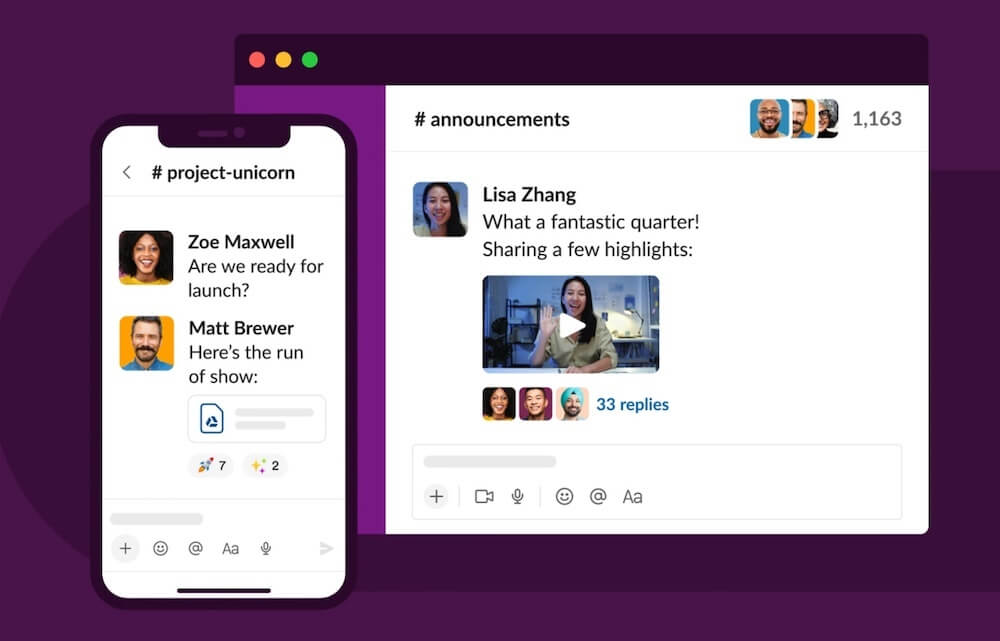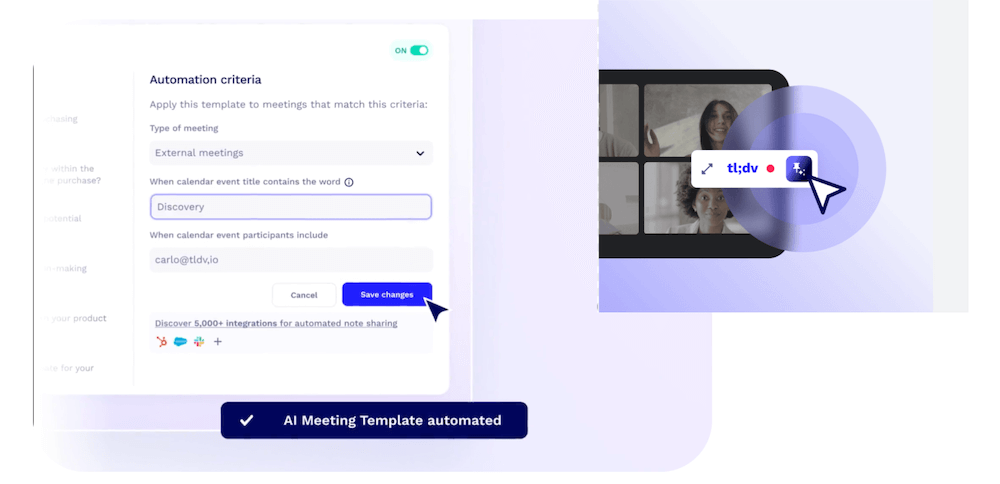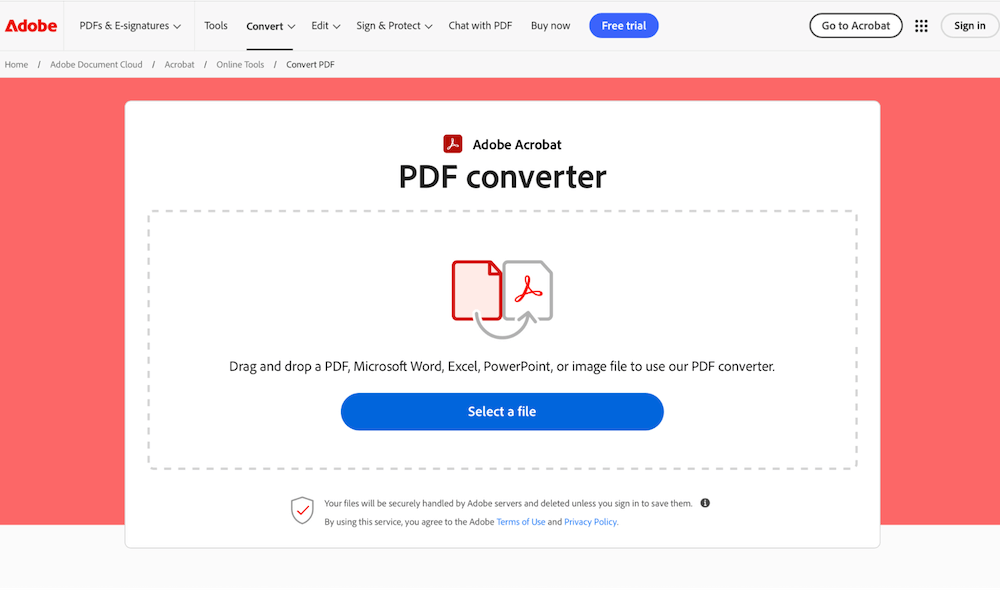
Why Feature Parity Isn’t Always the Goal: A Guide to Cross-device SaaS Strategy
Stop chasing feature parity across your SaaS platforms. Smart product leaders know when to replicate, when to specialize, and when to strategically limit functionality.
Lots of SaaS product leaders believe feature parity is the holy grail. The assumption is that if users can do something on your desktop app, they should be able to do it on mobile, web, and in any other version of your tool as well. Your customers expect it, your competitors are doing it, so you’d better keep up.
This thinking is not only wrong, but also expensive and potentially harmful to your product strategy.
Today’s SaaS products exist across multiple “surfaces,” not just desktop and mobile apps, but also mobile web, browser extensions, widgets, and even smart TVs. Each surface represents a different way users can interact with your product, and each can serve a distinct purpose.
After working with dozens of scaling SaaS companies and analyzing surface strategies across hundreds of products, we’ve discovered that the most successful companies don’t aim for feature parity. Instead, they make deliberate, strategic decisions about which surfaces serve which purposes in their ecosystem.
Here’s the framework that’s helping product leaders at companies like Adobe, Slack, and emerging SaaS startups rethink their entire multi-surface strategy.
Organic growth spurs feature parity
The pressure to achieve feature parity stems from a fundamental misunderstanding of how users actually interact with different surfaces. Product teams often default to replicating their experience across surfaces without considering the strategic implications.
“Most products start with just one surface,” explains Natalie Thomas, Director of Strategy & UX at The Good. “Adobe started with a desktop app, and YouTube started on the web. Then they often bleed into other surfaces. The family of surfaces is likely to grow over time, and they are of different strategic importance.”
This organic growth pattern creates a dangerous assumption that every surface should eventually do everything the original surface does. But here’s what we’ve learned from analyzing successful SaaS ecosystems: the most strategic approach isn’t about matching features. It’s about defining distinct purposes.
Enjoying this article?
Subscribe to our newsletter, Good Question, to get insights like this sent straight to your inbox.
The four strategic surface types every product leader should know
Rather than thinking in terms of feature parity, successful SaaS companies categorize their surfaces based on strategic purpose. This categorization is based on our analysis of high-performing SaaS ecosystems.
1. Replica surfaces
These are true feature-parity experiences where users expect identical functionality across platforms.
Example: Workplace productivity tools where users frequently switch between devices. Slack exemplifies this perfectly. You can upload documents, chat, huddle, and access virtually every feature across web, desktop, and mobile.

For collaboration tools, inconsistent experiences create friction in team workflows. Users expect to pick up exactly where they left off, regardless of device.
2. Utility surfaces
These platforms fundamentally can’t work without each other. One surface serves as a critical utility that supports the primary platform.
Example: TLDV’s Chrome extension functions as a utility for their web-based recording platform. “In this situation, we’re not really looking for feature parity in the Chrome extension because it really does serve as a utility that adds a lot of functionality and depth to what we are able to get out of the web experience,” notes Natalie.

Don’t waste product development resources building standalone functionality in utility surfaces. Their entire value comes from integration with the core platform.
3. Accessory/companion surfaces
These add value to the main platform but can’t function independently.
Example: Figma’s mobile app serves as a companion to their desktop design tool. Users can’t create designs on mobile, but they can preview prototypes and test user flows on actual devices.

You can’t do anything without the main surface, but the accessory/companion adds value. The mobile app enhances the design process without attempting to replicate the full desktop experience.
4. Growth lever surfaces
These exist primarily to acquire new users, not to provide comprehensive functionality.
Example: Adobe’s free web tools, like online PDF converters, serve as growth levers. Users get limited functionality for free, experience the brand value, then convert to paid desktop or mobile experiences.

“A surface, especially one with very, very limited capabilities, can exist solely as a strategic growth lever. It doesn’t have to exist just to get feature parity or to add value to an existing platform. It can exist just to try to get new customers in the door,” explains Natalie.
What it looks like to intentionally limit feature parity
One of the most instructive examples of strategic surface limitation comes from Instagram’s deliberate choice to restrict posting capabilities on desktop. While it can frustrate users, it actually reveals Instagram’s strategic genius. By limiting posting to mobile, they:
- Maintain their mobile-first brand identity
- Prevent the platform from becoming a business publishing tool
- Keep content creation spontaneous and authentic
- Reduce operational complexity
Mobile-first continues to dominate 2025 SaaS trends, with companies prioritizing mobile user experiences over desktop feature replication.
The lesson? Sometimes the features you don’t build are more strategically important than the ones you do.
How to start building a surface strategy that avoids the feature parity trap
So, with all of this in mind, how do you build a great surface strategy? Instead of blindly building features across all surfaces, successful SaaS companies have a few strategies in common to make smarter surface decisions.
1. Let platform economics shape your strategy
Understanding how users discover and purchase your product should directly influence your surface strategy. The path differs dramatically between mobile apps and web/desktop experiences.
Mobile considerations:
- App store optimization becomes critical
- Apple retains approximately 30% of subscription revenue
- Updates require user opt-in and are often batched
- Attribution becomes increasingly difficult
Web/desktop considerations:
- Direct-to-payment journeys possible
- Immediate updates without user intervention
- Better attribution tracking
- More flexible pricing models
These fundamental differences should influence not just your pricing strategy, but also which surfaces you prioritize for different user segments.
2. Build where your users engage
How users engage with surfaces could shape your strategy. For example, mobile users are significantly more likely to opt into push notifications than desktop users.
While working on surface strategy for a leading SaaS company, our client shared, “Opt-in rates for push notifications on desktop are so low that the only avenue to do outreach to those existing dormant customers is through emails.”
In this case, the ideal was to build any push notification functionality into mobile because on desktop it was practically useless. The learning can be applied across the board. Build your retention features on surfaces where users actually engage, not where you think they should engage.
3. Design for authentication, not attribution
Cross-device attribution is getting harder thanks to privacy changes and cookie deprecation. Instead of fighting this trend with complex tracking, design surface experiences that get users logged in quickly.
“Once someone is logged in, all bets are off; we’ve got good information about them. But until then, they are anonymous and we’re generally not able to attribute data,” says Natalie.
This means prioritizing authentication flows over extensive anonymous functionality. In this case, depending on your growth initiatives, your surface strategy may prioritize guiding users toward logged-in states rather than providing comprehensive experiences for guest users.
4. Match your tools to your strategy
Most SaaS companies default to familiar tools like Google Analytics and Hotjar because they’ve historically focused on web experiences. But scaling to multiple surfaces requires different technology approaches.
Web-Focused Tools:
- Google Analytics
- Hotjar
- Traditional A/B testing platforms
App-Optimized Tools:
- Amplitude: Combines analytics and testing specifically for app experiences; allows product managers direct data access
- Pendo: Integrates surveys, heat maps, and onboarding flows for mobile apps
- Adobe Journey Optimizer: Enables in-product testing across surfaces
Choose tools that support your surface strategy rather than forcing your strategy to fit your existing tool stack. Surface strategy is a business decision that should be driven by user needs, revenue models, and competitive positioning, not technical capability.
5. Define success differently for each surface
A growth lever surface shouldn’t be measured the same way as a full-featured replica surface. Define success metrics that align with each surface’s strategic purpose:
- Growth surfaces: Conversion rate to core platform; cost per qualified lead
- Utility surfaces: Integration success rate; core platform usage lift
- Companion surfaces: Feature adoption in main platform; user satisfaction
- Replica surfaces: Cross-device workflow completion; feature usage parity
Stop measuring everything the same way. Different surfaces serve different purposes and should be evaluated accordingly.
6. Start with purpose, not capability
The wrong question: “Can we build this feature on mobile?” The right question: “Should this feature exist on mobile given our strategic purpose for this surface?”
Before building anything new, clearly define what strategic purpose each surface serves:
- Growth lever: Limited functionality to drive awareness and conversion
- Utility: Essential support that makes the core platform more valuable
- Companion: Unique value that leverages platform-specific capabilities
- Replica: Full feature parity for seamless cross-device workflows
Once you’re clear on purpose, feature decisions become much easier to make.
Building everything, everywhere, isn’t the answer. Many product teams default to feature parity because it feels “fair” to users. In reality, this often creates mediocre user experiences across all surfaces instead of excellent user experiences where they matter most.
Getting started with a surface strategy that doesn’t over-emphasize feature parity
The companies winning in the multi-surface SaaS landscape aren’t the ones with the most features across the most platforms. They’re the ones making the smartest strategic decisions about where to focus their development resources.
If you’re struggling with where to start, here are a few ideas:
- Start with one surface audit. Pick your least strategic surface and honestly evaluate whether you’re over-building functionality that doesn’t serve your business goals or user needs in the name of feature parity.
- Question your assumptions about user expectations. Users might actually prefer a focused, excellent user experience over a comprehensive one that is mediocre.
- Align your team around surface strategy. Make sure product, engineering, and growth teams understand the strategic purpose of each surface, not just the feature requirements.
The goal isn’t to build less, it’s to build more strategically.
Ready to optimize your SaaS surface strategy? At The Good, we help scaling SaaS companies make smarter product decisions through data-driven audits and optimization. Our team has guided companies, from Adobe to emerging startups, in creating multi-surface user experiences that actually drive growth, rather than just checking feature boxes.
Schedule a strategic consultation to discover which surfaces are driving growth and which are consuming resources without strategic return. Let’s turn your multi-surface challenge into your competitive advantage.

About the Author
Katie Encabo
Katie Encabo is the Customer Success Manager at The Good. She focuses on supporting and improving the experience of top-performing ecommerce and SaaS growth teams as they optimize the digital experience for their users.